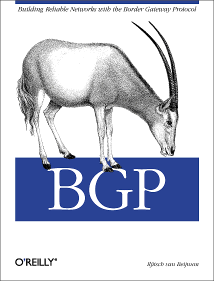
|

|

|
|
Home ·
BGP Expert Test ·
What is BGP? ·
BGP Vendors ·
Links ·
Archives ·
Books ·
My New BGP Book | ||
What is BGP, anyway?When you make a modem connection to your ISP and want to connect to, for instance, www.bgpexpert.com, all the routers along the way have to know where to send the packets you're sending to our Web server, and the packets from the server have to find their way back to your computer.For the first few hops, this isn't much of the problem. For instance, your computer only knows the packets don't have a local destination, so they should be sent over the modem connection. This can continue for a while, but at some point the decision where to send the packet next becomes more complex than just "local: keep it" / "not local: send it to a smarter router". The router making this decision will have to know where to send the packet based on the destination IP address contained in it. Since IP addresses are distributed fairly randomly around the globe, there aren't any shortcuts or calculations that make it possible for the router to decide this for itself. The only way a router can know where to send a packet, is when another router tells it "send those packets to me, I know how to deliver them". The Border Gateway Protocol (BGP) is a protocol that is used between routers to convey this information. Since the routers that talk BGP to each other aren't owned by the same organization (that would kind of defeat the purpose of creating global reachability) this is often called "inter-domain" routing. BGP and Interdomain Routing Terms
|
